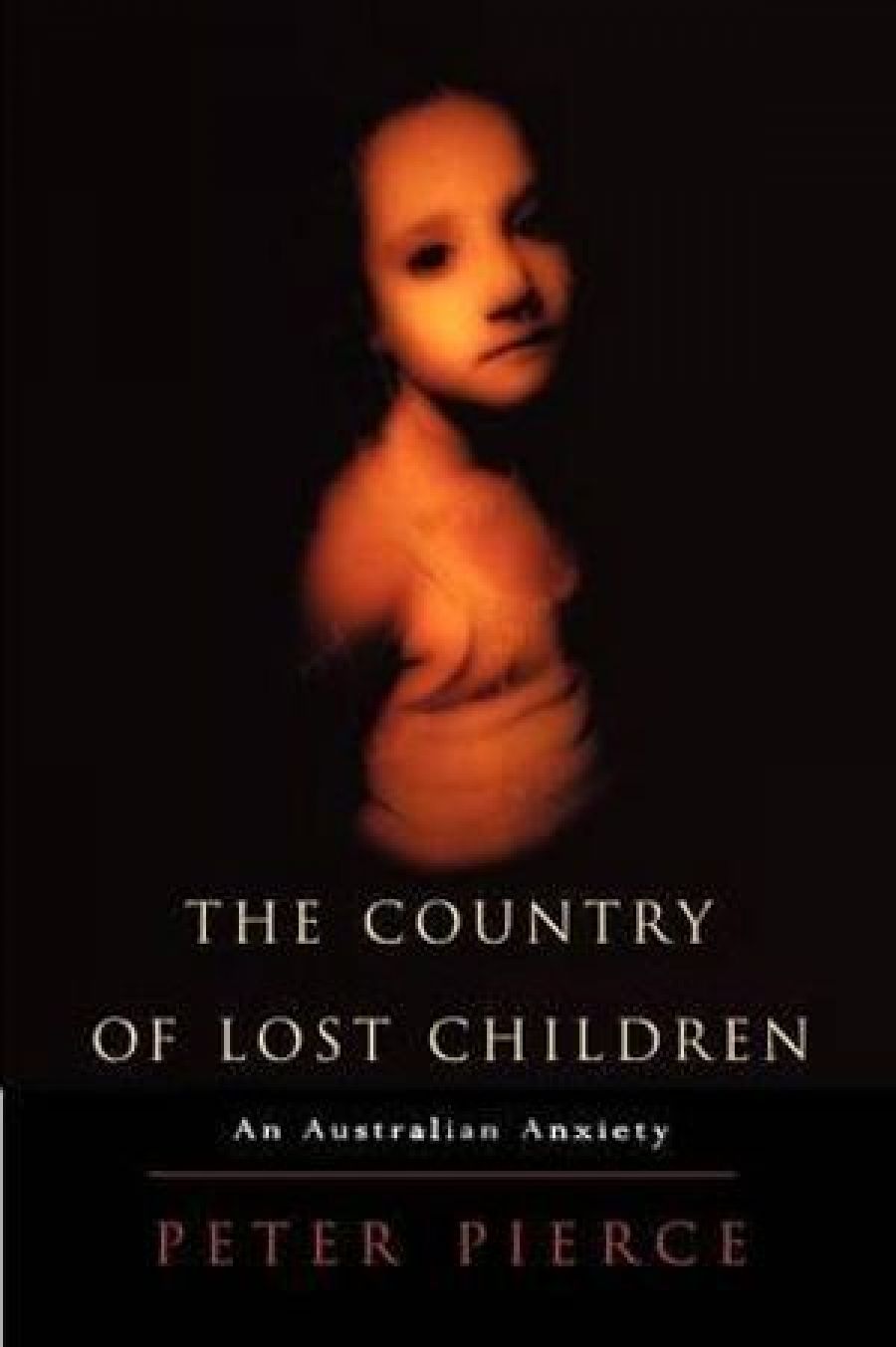
- Free Article: No
- Contents Category: Australian History
- Review Article: Yes
- Online Only: No
- Custom Highlight Text:
Peter Pierce’s concern in this critical study is with two periods – from the second half of the nineteenth century, when most of the myths of the lost child began to appear, and the second half of this century, when a quite different kind of narrative emerges. The period in between he regards as largely a consolidation of the late nineteenth-century examples. Ranging widely over not only literature but pictorial art and contemporary factual accounts, he shows the striking changes that take place in the forms in which the legend appears.
- Book 1 Title: The Country of Lost Children
- Book 1 Subtitle: An Australian anxiety
- Book 1 Biblio: Cambridge University Press, $24.95 pb, 202 pp
- Book 1 Readings Link: booktopia.kh4ffx.net/ed5zr
Perhaps the travails and sometimes the deaths of children are emblematic either of the forfeiting of part of the national future, or of an anxiety that Australia will never truly welcome European settlement. There is also an intimation of the guilt of parents for ever having brought children to such a hostile environment.
At the risk of sounding literal or simplistic, this seems to me to be drawing rather a long bow. As Pierce’s own account testifies, children were often lost in the bush, a situation of dramatic poignancy, so that it is not hard to see why fiction writers would want to write about it and artists to paint it. Pierce notes also that it lends itself naturally to the highly popular genre of melodrama. Lawson’s fictional treatment of the theme, for instance, is fully in keeping with other of his stories that deal with madness in the endemic solitude of the bush. He is less interested in the children themselves than in the effects of their loss on their shattered parents.
Pierce also places a class spin on the stories, sometimes in what seems to me to be an unfair way. Newspaper accounts, he argues, imply the helplessness and passivity of the lost children without the intervention of the squatting class, whose search for the children both helps renew their sources of labour and suggests their attitudes of noblesse oblige. Is it too simple to suggest that whatever their privileges they might have been motivated by the kind of ordinary human sympathy that most people would have in the same situation? Certainly, when they don’t go out searching, he is scathingly contemptuous of them – like the squatters’ sons who entertain an audience with a poetry reading while others are searching.
Pierce argues that most of the lost children came from the families of the rural poor and speculates interestingly on the role of the Aborigines in these narratives. Aborigines often feature as the ‘secular agents’ of salvation. Stories of lost children are a means by which Aborigines may be re-admitted to the mainstream narratives in, and of, Austral, though sadly in the end this doesn’t happen.
When he turns to the twentieth century, however, Pierce’s vision is darker still: ‘the figure of the lost child still haunts the Australian imagination. Many novels, stories, plays and films since the 1950s are preoccupied with terrible transformations of that figure – abandoned, abused, aborted, abducted or murdered.’ 20th century accounts of the lost child are absent in redemptive possibilities; they are about ‘the rending of communities, rather than the uniting of them’. Again, Pierce reads a much larger significance into this. He goes so far as to call it ‘a cultural death wish’.
My reservations about some of Pierce’s more ambitious readings aside, this is a wide-ranging and compelling book. The choice of texts is imaginative and often original. For instance, there is a fascinating discussion of Lawler’s Summer of the Seventeenth Doll in terms of the absence of children and the attempt to create surrogates for them. Who would have thought of Frank Moorhouse in terms of this theme, and yet a plausible case is made that ‘Moorhouse’s lost ones are the urban children who might have been.’ The discussions are thorough and wide-ranging.
Pierce states admirably that his book ‘is written in hope, out of a humanist belief that the rehearsal of stories of our past … can still illumine how in Australia we came to be as we are, a people persistently fearful of where we are lodged in place and time’. In particular, he wishes to draw attention to the widespread abuse of children in Australia in the second half of this century and to the still unresolved tragedy of our treatment of the Aboriginal people.


Comments powered by CComment